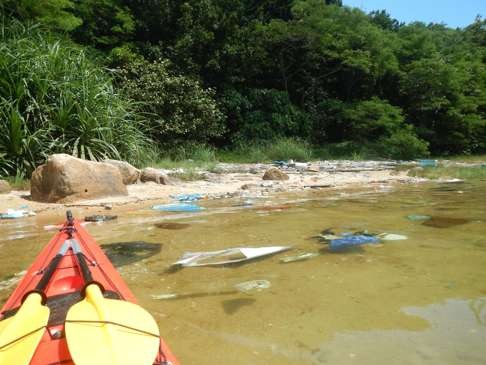
Hong Kong officials blame China floods for tide of filth washing up on city beaches
Amid public outcry, environment officials say up to 10 times the usual volume of sea-borne refuse is hitting city’s shores because of heavy flooding in Pearl River basin; plastic tide is taking toll on marine life

The Hong Kong government has pointed the finger at China for the huge amounts of refuse that have washed up on the city’s southern beaches in recent weeks.
Six to 10 times the usual volume of marine refuse was being washed up, the Environmental Protection Department said. It believes this is a result of heavy rain and floods in the Pearl River basin.

“We suspect that the floods in mid-June on the mainland might have brought the refuse to the sea and then the refuse is brought to Hong Kong by the southwest monsoon wind and the sea currents,” the department said in response to inquiries by SCMP.com.
“A similar phenomenon happened in 2005 when a massive amount of debris and refuse was found at various beaches and coastal areas of Hong Kong after a serious one-in-a-100-year flood on the mainland,” the statement said.
It said severe rainstorms and floods in mid-June in the provinces of Guangdong, Guangxi, Hunan and Jiangxi, through which the Pearl River or its tributaries flow, had caused flooding of a severity seen only once every 20 years.
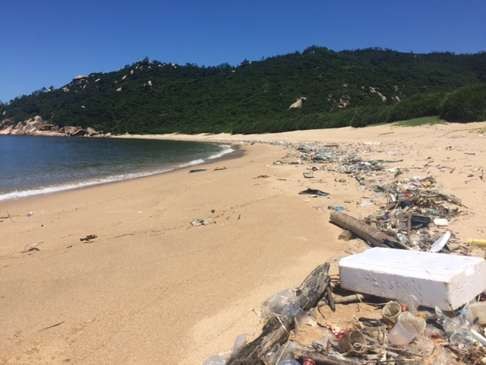
The department said it had received reports from June 20 onwards about marine refuse found on various beaches and sections of coastline in the southern part of Hong Kong, including Deep Water Bay, Shek O, Po Toi, Lamma, Cheung Sha, Pui O, and Tong Fuk.
The sheer amount of rubbish washing up has triggered a public outcry, with hundreds of concerned citizens taking to social media to share images of refuse strewn along beaches and in coastal waters and to demand the government take immediate action.
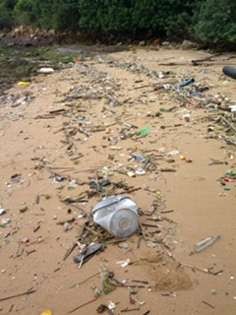
Environmental groups also suggest some of the marine refuse may be coming from a big illegal dump on the shores of Wailingding Island in Chinese waters near the southern coast of Hong Kong Island.
Gary Stokes, director for Southeast Asia of environmental group the Sea Shepherd Conservation Society, believes this is the first time the Hong Kong government has directly accused China of polluting the city’s oceans and beaches with marine refuse.
Stokes said: “The common answer to our problems seems to be to conveniently blame our neighbour when reality shows much of it is ours, but in this case it is warranted, as the trash talks – and it clearly says made in China.”
He said the volume of marine refuse washing ashore in recent weeks shows it has to be coming from a large source. “Trash making its way into river systems and sewer drains is a failure of preventative management by the mainland departments tasked with this responsibility,” he said.
“The make-up of the trash is also alarming – there are so many clear plastic cups and bowls of exactly the same type, which would indicate it’s coming from one location. These aren’t from accidental run-off into the sea from random sources – this looks like illegal dumping.”
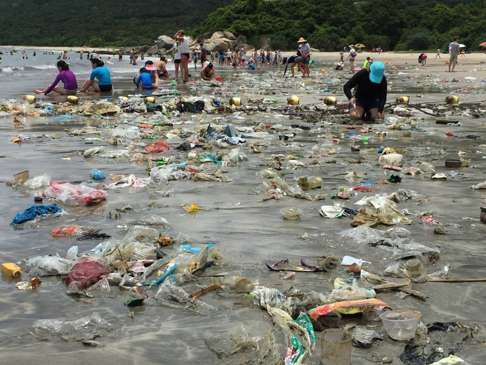
Volunteer group Hong Kong Cleanup Challenge is preparing to mobilise Hongkongers for its next campaign, which begins on September 1, but co-founder Lisa Christensen said the government should not rely on citizens to clean up the mess.
“Volunteer clean-ups are an educational tool and a source of data. They are not the solution to the tidal wave of trash in Hong Kong’s waters,” she said.
Sea Kayak Hong Kong’s David Wilson says the government is in denial about the marine waste problem.
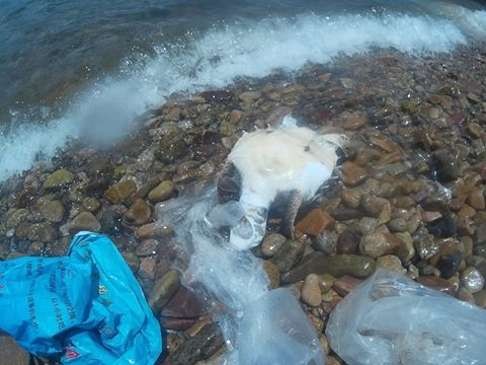
Wilson was left shocked and saddened last week when for the first time he saw a green sea turtle in Hong Kong – washed up dead on Lamma Island with plastic protruding from its mouth and its body wrapped in plastic.
He says that same day he saw three one-metre-long garoupas and a stingray washed up dead on the same shore.
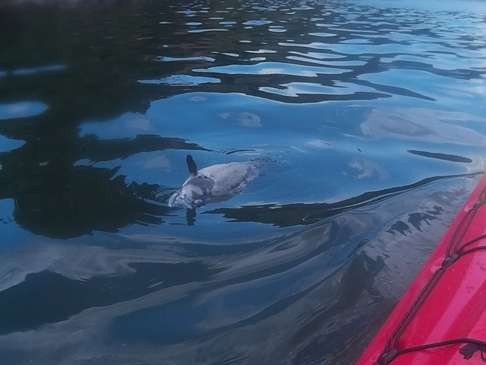
Wilson, who has kayaked around Hong Kong waters since 2012, made the discoveries on the first day of an exercise to map rubbish hot spots for Global Alert, an online mapping tool that allows users – particularly hikers and beach-goers – to report, rate and map the locations of rubbish blackspots and alert the community to take action. Its main focus is floating plastic trash, which is produced on land but tends to accumulate in rivers and lakes and along coastlines.
“It’s a depressing task, to hop in a vessel to look for human waste on remote coastlines,” Wilson said.
Mapping for the app will take about a year. He said that while he expected to find some “horrible stuff” he didn’t expect to see a dead turtle and dead garoupas on the first day. “It was a shock. Hong Kong has had a trash problem for a very long time – it’s in denial.” He added: “We only found one spot 15 metres long that did not have rubbish.”
Volunteer clean-ups are an educational tool and a source of data. They are not the solution to the tidal wave of trash in Hong Kong’s waters
Last month four dead porpoises were found in Discovery Bay .
Nicholas Mallos, director of the Trash Free Seas Programme at Ocean Conservancy, says: “There is an alarming volume of trash in the ocean, and we need to take action to stem the tide and ultimately reverse this trend.
“If this trend continues, it is projected that by 2025 there could be one tonne of plastic for every three tonnes of fin fish. With activities like Hong Kong Cleanup, the amount of trash collected by people working together can result in cleaner beaches, rivers and lakes for all to enjoy.”
The Hong Kong Cleanup Challenge is now in its 16th year of mobilising a volunteer army to address the growing emergency. Registrations for the challenge are now open.
The challenge, organised by Ecozine and part of Ocean Conservancy’s International Coastal Cleanup in Hong Kong, will take place between September 1 and December 1 on beaches and country trails and in urban areas throughout Hong Kong.
Registration details and more information can be found at HKcleanup.org